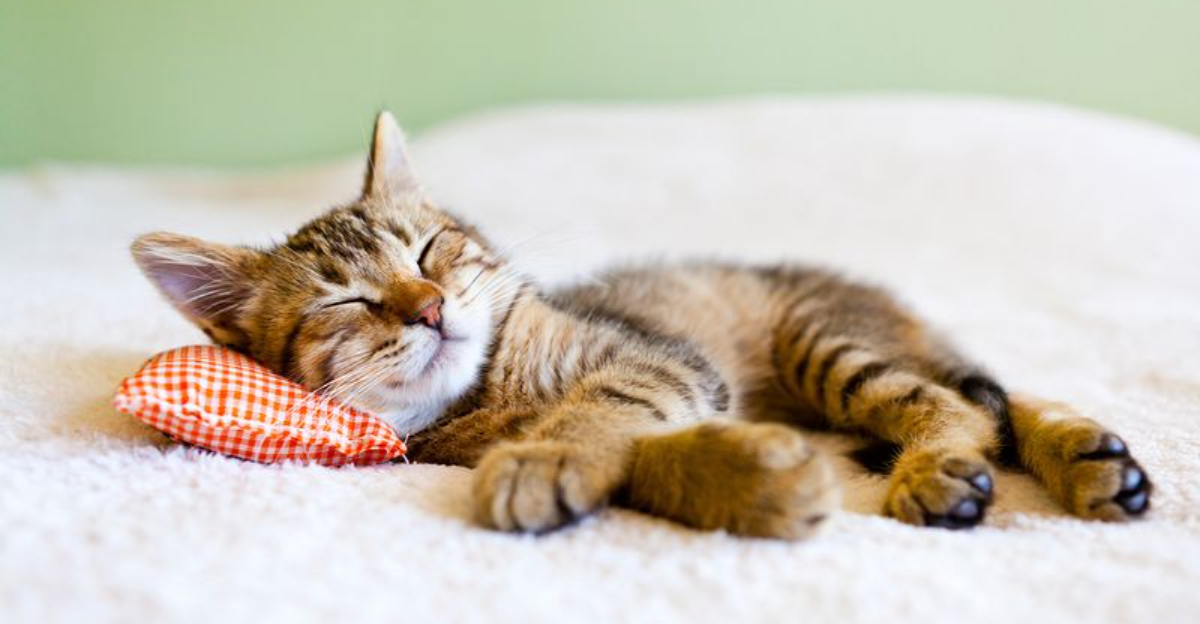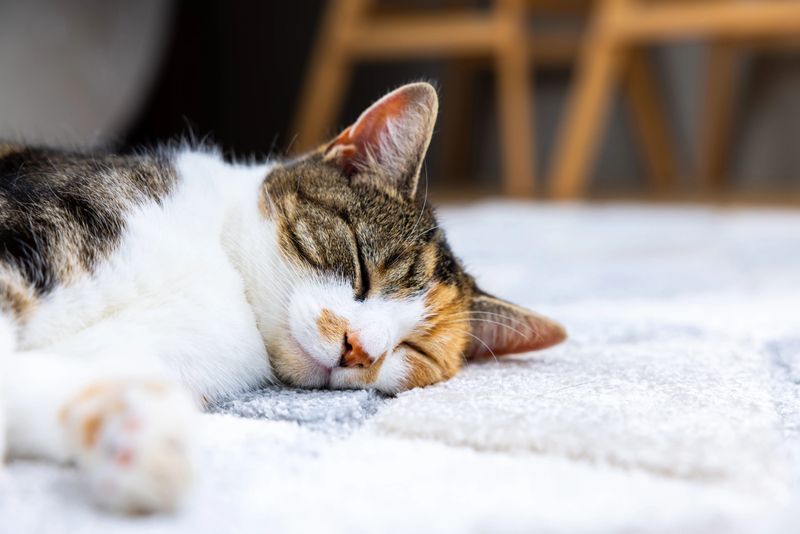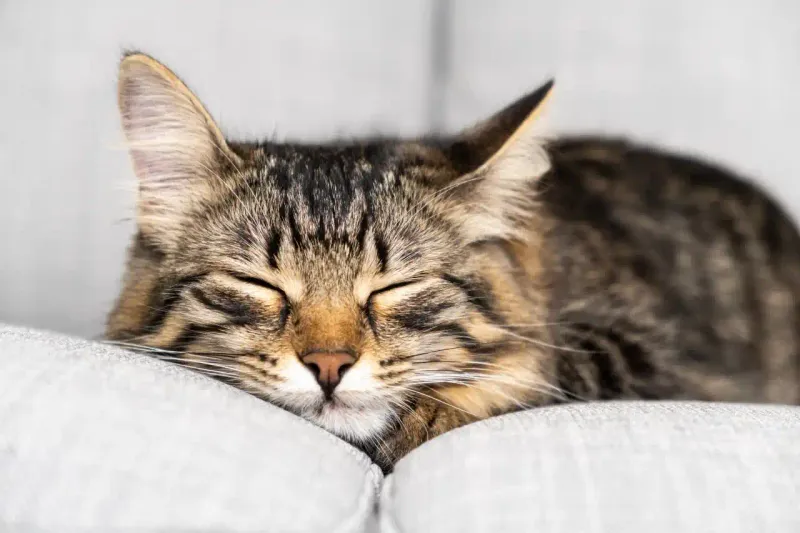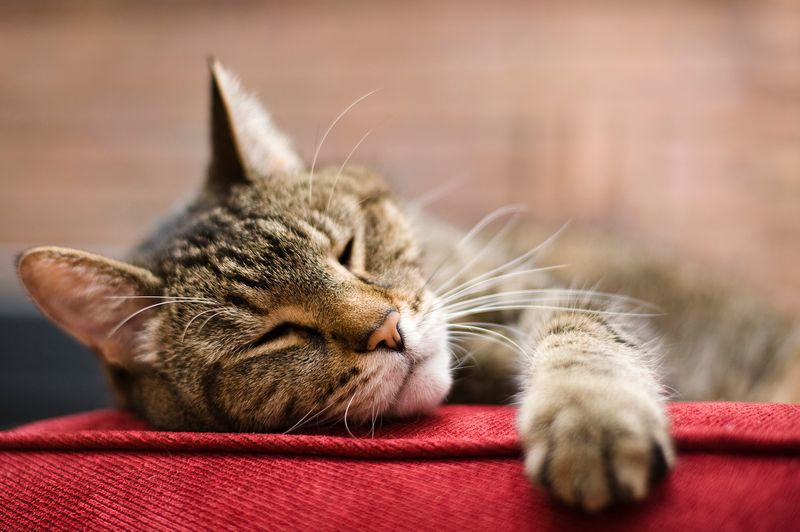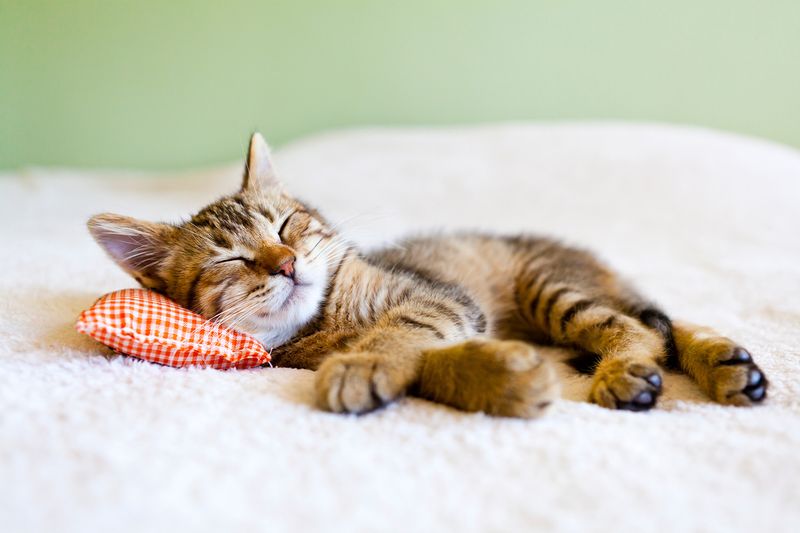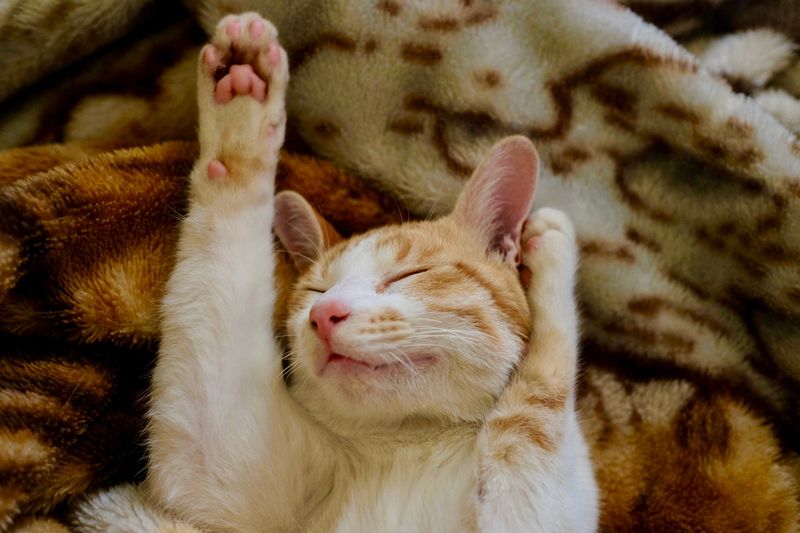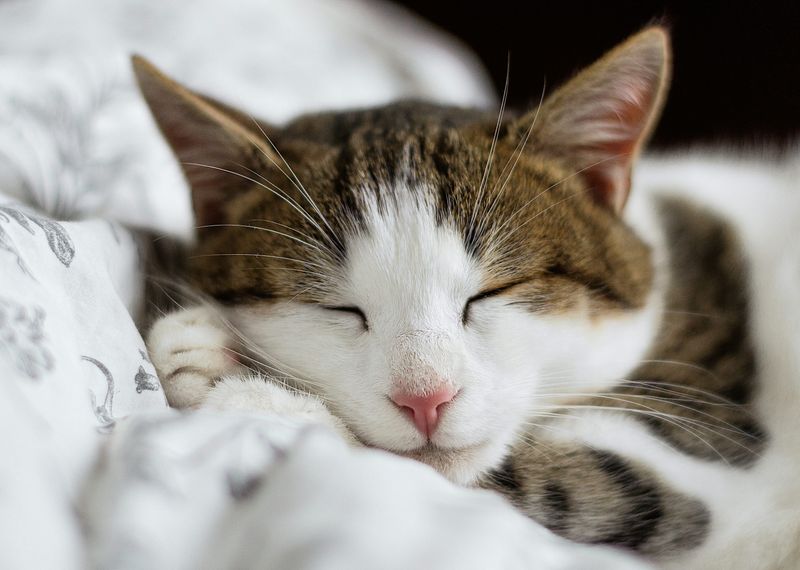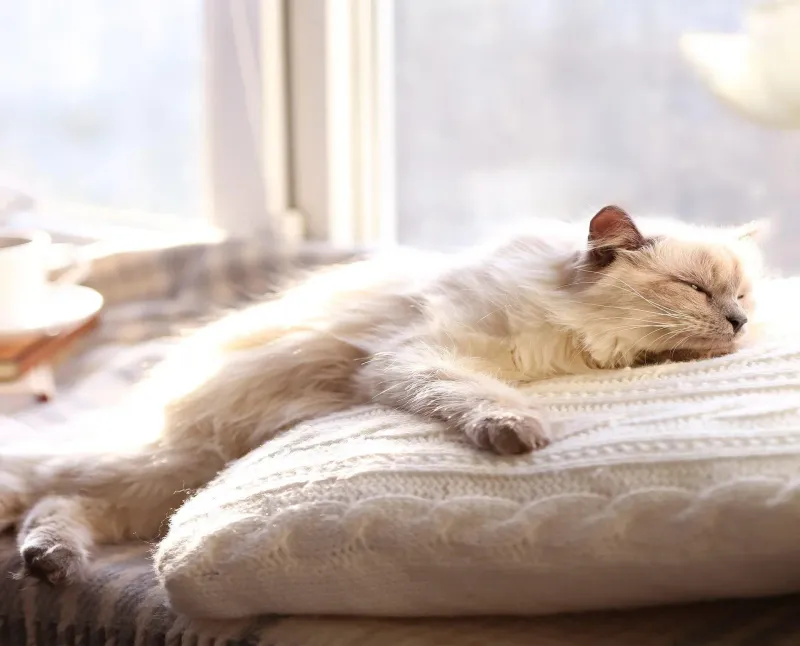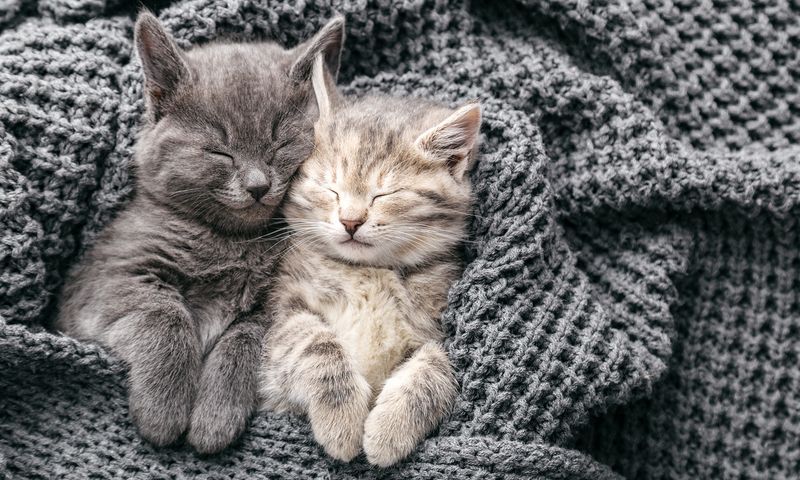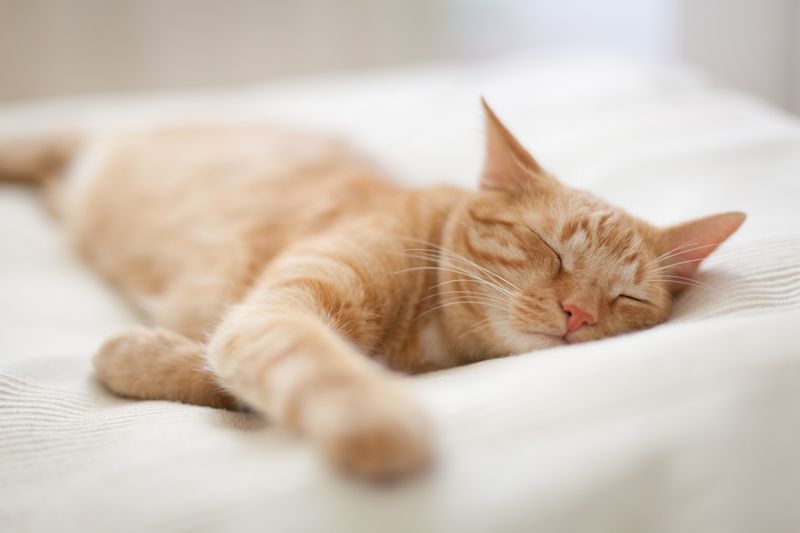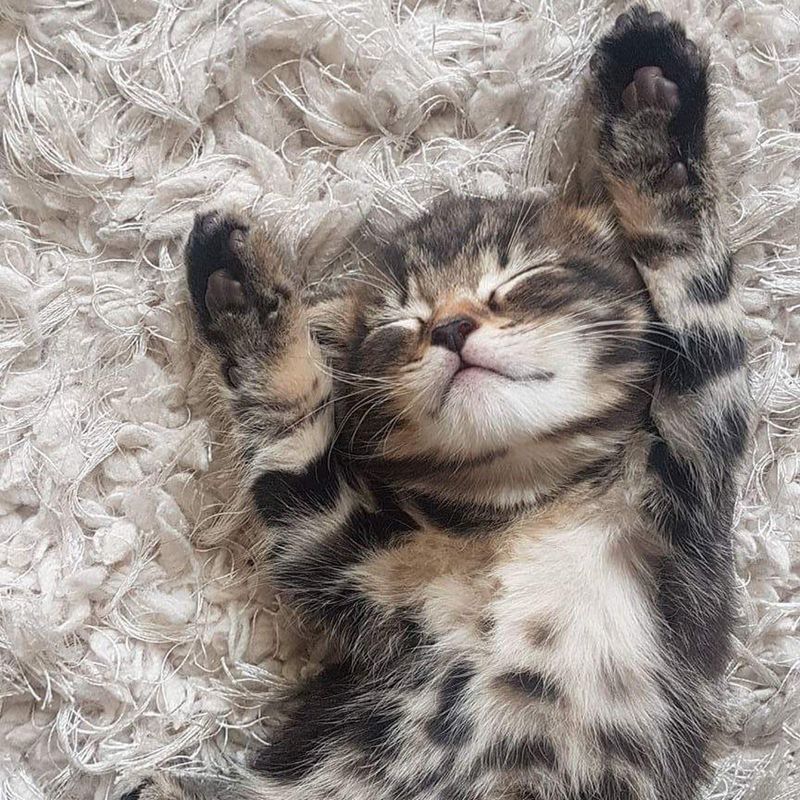📖 Table of Content:
- 1. Sleep Duration
- 2. Sleep Stages
- 3. Sleep Patterns
- 4. Wakefulness
- 5. Dreaming
- 6. Sleep Environment
- 7. Energy Conservation
- 8. Sleeping Positions
- 9. Sleep Cycle Length
- 10. Adaptability to Noise
- 11. Sleep Cycle Transitions
- 12. Influence of Age
- 13. Social Sleeping
- 14. Influence of Diet
- 15. Temperature Regulation
Cats and humans have vastly different sleep patterns, which can explain why cats often seem to sleep for much longer periods. Unlike humans, cats are crepuscular, meaning they are most active during dawn and dusk. Their natural instincts and biological needs play a large role in shaping these unique sleep cycles.
While humans typically follow a regular sleep schedule, cats have a more flexible routine. They tend to sleep in shorter bursts throughout the day and night, with periods of wakefulness in between. This behavior is linked to their predatory nature, as they need to stay alert for hunting or play.
By understanding these differences, it becomes clear why cats spend so much time sleeping. Their sleep habits are not just about relaxation; they are deeply tied to their evolutionary traits and survival instincts. Recognizing these patterns allows for a deeper appreciation of how our feline companions rest and recharge.
1. Sleep Duration
Cats typically sleep between 12 to 16 hours a day, while humans average about 7 to 9 hours. This extended sleep period in cats is due to their crepuscular nature, which means they are most active during dawn and dusk. In contrast, humans have adapted to a diurnal schedule, sleeping mostly at night. Cats’ frequent napping allows them to conserve energy for their bursts of activity.
Humans, on the other hand, require longer, uninterrupted sleep to function optimally. This fundamental difference affects how each species organizes its day and night activities.
2. Sleep Stages
Both cats and humans experience REM (Rapid Eye Movement) sleep, but the way they cycle through sleep stages differs. Cats enter REM sleep quickly and experience it in short, frequent bouts. These REM phases are interspersed with light sleep, allowing them to wake easily if necessary. Humans, however, have longer sleep cycles, with REM sleep making up a smaller portion of their total sleep.
This stage is crucial for cognitive functions such as memory and learning. Understanding these differences highlights the adaptive behavior of cats and our need for restorative sleep.
3. Sleep Patterns
Known for their polyphasic sleep patterns, cats take several naps during the day, unlike humans who sleep once at night in a continuous block. This difference highlights their unique rest cycle.
Cats’ short naps help them stay alert for hunting, reflecting their wild ancestry. Humans, with their structured daytime activity, rely on a single long sleep for recovery. This distinction affects everything from daily routines to energy management, illustrating the differing evolutionary paths of cats and humans.
4. Wakefulness
As crepuscular creatures, cats thrive during the dawn and dusk hours, often waking up just when humans are getting ready to sleep. In contrast, humans are diurnal, staying awake and alert during the day while preparing for rest in the evening.
This difference explains why cats may seem restless or playful in the early morning or late evening. Understanding these patterns can help pet owners better interact with their feline companions, aligning activities with their natural wakefulness.
5. Dreaming
Like humans, cats experience dreams during REM sleep, where they might twitch or make small sounds. This behavior indicates mental processing, similar to humans dreaming about their daily experiences. The content of a cat’s dreams likely revolves around instinctual activities such as hunting or playing.
While humans dream about more complex social and personal scenarios, both species use dreaming for processing experiences and emotions. Recognizing that cats dream can deepen our empathy and understanding of their behavior and needs.
6. Sleep Environment
Cats are flexible sleepers and can doze off in a variety of environments, from sunny windowsills to cozy couches. Their ability to sleep on different surfaces reflects their adaptability and survival instincts. Humans, in contrast, typically require a comfortable bed and quiet environment to achieve good quality sleep.
This need for specific conditions can affect sleep hygiene and overall well-being. Understanding these environmental preferences can help in creating better sleeping arrangements for both cats and humans.
7. Energy Conservation
To conserve energy for moments of activity, cats sleep often, a habit rooted in their wild ancestry where rest was necessary for successful hunting. This leads to multiple naps throughout their day. Humans, however, engage in physical activities like exercise, which helps regulate energy and overall health.
While cats recharge with frequent short naps, humans derive energy from activities and longer rest periods. This difference highlights the varied ways each species manages its energy, influenced by lifestyle and evolutionary needs.
8. Sleeping Positions
When cats sleep, they often curl up in ways that preserve warmth and shield their vital organs, an instinctive behavior that offers protection. These positions make them feel safe and cozy. Humans, in contrast, typically sleep in a preferred position, such as lying on their back, side, or stomach, for maximum comfort.
These positions can influence sleep quality and physical health. By understanding the significance of sleeping positions, owners can ensure their pets and themselves are comfortable and well-rested, enhancing overall well-being.
9. Sleep Cycle Length
With shorter sleep cycles of 20 to 30 minutes, cats are able to wake quickly and stay alert to their environment, a behavior linked to their predatory nature. This helps them remain on guard while resting. In comparison, humans enjoy longer sleep cycles, usually around 90 minutes, that include restorative deep sleep and REM stages.
This extended cycle is essential for mental rejuvenation and physical recovery. The difference in cycle length between cats and humans underscores the unique evolutionary adaptations in response to environmental needs.
10. Adaptability to Noise
Cats have an impressive ability to sleep through noise, a byproduct of their instinctual need to remain relaxed yet alert to changes in their environment. This adaptability allows them to rest in various settings without disturbance.
Humans, however, may find it difficult to sleep in noisy environments, often requiring silence or earplugs. This contrast highlights the adaptability of cats to their surroundings, while humans must often create optimal conditions for restful sleep. Understanding these differences can improve how we cater to sleep needs at home.
11. Sleep Cycle Transitions
Thanks to their polyphasic sleep patterns, cats transition smoothly through different sleep stages, which helps them wake easily and respond to their surroundings. This ability is tied to their evolutionary role as predators and prey. Humans, however, often feel disoriented and groggy when woken suddenly during the deep sleep cycle.
This difference in sleep cycle transitions shows the diverse adaptations each species has developed to thrive in their respective environments, impacting how they respond to external stimuli upon waking.
12. Influence of Age
Both cats and humans experience changes in sleep patterns as they age, but these changes manifest differently. Kittens are known for their long sleep periods, necessary for growth and development, while older cats may sleep even more. Humans, in their senior years, might experience disrupted sleep or changes in sleep depth.
Understanding the influence of age on sleep can help pet owners and individuals tailor sleeping arrangements and daily routines to support healthy sleep habits across the lifespan of both species.
13. Social Sleeping
Although cats are instinctively solitary sleepers, they may choose to rest close to trusted companions, whether fellow cats or humans, for warmth and bonding. This behavior is rooted in their need for both physical comfort and social closeness. Humans, on the other hand, often sleep near their partners or family members to strengthen emotional ties and feel secure.
The differences in social sleeping habits underscore the varied social dynamics between cats and humans, highlighting the importance of trust and companionship in sleep behavior for both species.
14. Influence of Diet
Diet plays a significant role in sleep patterns for both cats and humans. Cats, obligate carnivores, need protein-rich diets to fuel their energy and sleep cycles. Their meals can influence how long and how deeply they sleep.
Humans, requiring balanced nutrition, find that heavy meals or caffeine before bed can disrupt sleep. Understanding the influence of diet on sleep helps in managing meal times and dietary choices to promote better rest. These insights offer practical advice for optimizing sleep through dietary adjustments.
15. Temperature Regulation
Seeking warmth while napping is a natural behavior for cats, aiding in their ability to regulate body temperature. This instinct is rooted in the need for heat conservation, passed down from their wild ancestors. Humans, in contrast, use tools like blankets and indoor heating or cooling systems to control their temperature.
This difference highlights the distinct adaptations each species employs for comfort and survival. Recognizing these methods can help create optimal sleeping conditions that cater to the specific temperature regulation needs of cats and humans.
